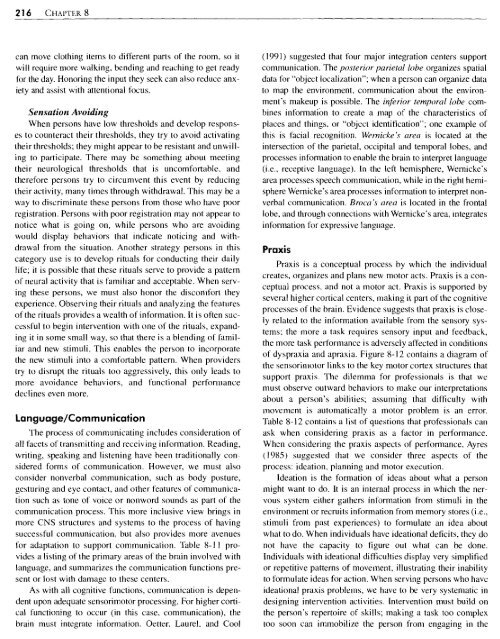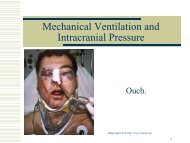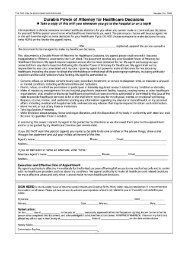Implementing Neuroscience Principles to Support Habilitation and ...
Implementing Neuroscience Principles to Support Habilitation and ...
Implementing Neuroscience Principles to Support Habilitation and ...
Create successful ePaper yourself
Turn your PDF publications into a flip-book with our unique Google optimized e-Paper software.
can move clothing items <strong>to</strong> different parts of the room, so it<br />
will require more walking, bcnding <strong>and</strong> reaching <strong>to</strong> get ready<br />
for the day. Honoring the input they seek can also reduce anxiety<br />
<strong>and</strong> assist with attentional focus.<br />
Sensation Avoiding<br />
When persons have low thresholds <strong>and</strong> develop responses<br />
<strong>to</strong> counteract their thresholds, they try <strong>to</strong> avoid activating<br />
their thresholds; they might appear <strong>to</strong> be resistant <strong>and</strong> unwilling<br />
<strong>to</strong> participate. There may be something about meeting<br />
their neurological thresholds that is uncomfortable. <strong>and</strong><br />
therefore persons try <strong>to</strong> circumvent this event by reducing<br />
their activity, many times through withdrawal. This may be a<br />
way <strong>to</strong> discriminate these persons from those who have poor<br />
registration. Persons with poor registration may not appear <strong>to</strong><br />
notice what is going on, while persons who are avoiding<br />
would display behaviors that indicate noticing <strong>and</strong> withdrawal<br />
from the situation. Another strategy persons in this<br />
category use is <strong>to</strong> develop rituals for conducting their daily<br />
life; it is possible that these rituals serve <strong>to</strong> provide a pattern<br />
of neural activity that is familiar <strong>and</strong> acceptable. When serving<br />
these persons, we must also honor the discomfort they<br />
experience. Observing their rituals <strong>and</strong> analyzing the features<br />
of the rituals provides a wealth of information. It is often successful<br />
<strong>to</strong> begin intervention with one of the rituals, exp<strong>and</strong>ing<br />
it in some small way, so that there is a blending of Samiliar<br />
<strong>and</strong> new stimuli. This enables the person <strong>to</strong> incorporate<br />
the new stimuli in<strong>to</strong> a comfortable pattern. When providers<br />
try <strong>to</strong> disrupt the rituals <strong>to</strong>o aggressively, this only leads <strong>to</strong><br />
more avoidance behaviors, <strong>and</strong> functional perforniance<br />
declines even more.<br />
The process of communicating includes consideration of<br />
all facets of transmitting <strong>and</strong> receiving information. Reading,<br />
writing, speaking <strong>and</strong> listening have heen traditionally considered<br />
forms of communication. However, we must also<br />
consider nonverbal communication, such as body posture,<br />
gesturing <strong>and</strong> eye contact, <strong>and</strong> other features of communication<br />
such as <strong>to</strong>ne of voice or nonword sounds as part of the<br />
communication process. This more inclusive view brings in<br />
more CNS structures <strong>and</strong> systems <strong>to</strong> the process of having<br />
successful communication. but also provides more avenues<br />
for adaptation <strong>to</strong> support communication. Table 8-1 1 provides<br />
a listing of the primary areas of the brain involved with<br />
language, <strong>and</strong> summarizes the communication functions present<br />
or lost with damage <strong>to</strong> these centers.<br />
As with all cognitive functions, communication is dependent<br />
upon adequate sensorimo<strong>to</strong>r processing. For higher cortical<br />
functioning <strong>to</strong> occur (in this case. communication), the<br />
brain must integrate information. Oetter. Laurel, <strong>and</strong> Cool<br />
(1991) suggested that four major integration centers support<br />
communication. The posterior purietal lobe organizes spatial<br />
data for "object localization"; when a person can organize data<br />
<strong>to</strong> map the environment, communication about the environment's<br />
makeup is possible. The inferior temporal lobe combines<br />
information <strong>to</strong> create a map of the characteristics of<br />
places <strong>and</strong> things. or "object identification"; one example of<br />
this is facial recognition. Wernicke's area is located at the<br />
intersection of the parietal, occipital <strong>and</strong> temporal lobes, <strong>and</strong><br />
processes information <strong>to</strong> enable the brain <strong>to</strong> interpret language<br />
(i.e., receptive language). In the left hemisphere, Wemicke's<br />
area processes speech communication, while in the right hemisphere<br />
Wernicke's area processes infornution <strong>to</strong> interpret nonverbal<br />
communication. Broca's ureu is located in the frontal<br />
lobe, <strong>and</strong> through connections with Wemicke's area, integrates<br />
information for expressive language.<br />
Praxis<br />
Praxis is a conceptual process by which the individual<br />
creates, organizes <strong>and</strong> plans new mo<strong>to</strong>r acts. Praxis is a conceptual<br />
process. <strong>and</strong> not a mo<strong>to</strong>r act. Praxis is supported by<br />
several higher cortical centers, making it part of the cognitive<br />
processes of the brain. Evidence suggests that praxis is closely<br />
related <strong>to</strong> the information available from the sensory systems:<br />
the more a task requires sensory input <strong>and</strong> feedback,<br />
the more task performance is adversely affected in conditions<br />
of dyspraxia <strong>and</strong> apraxia. Figure 8-12 contains a diagram of<br />
the sensorimo<strong>to</strong>r links <strong>to</strong> the key mo<strong>to</strong>r cortex structures that<br />
support praxis. The dilemma for professionals is that we<br />
must observe outward behaviors <strong>to</strong> make our interpretations<br />
about a person's abilities; assuming that difficulty with<br />
movement is au~oniatically a mo<strong>to</strong>r problem is an error.<br />
Table 8-1 2 contains a list of questions that professionals can<br />
ask when considering praxis as a fac<strong>to</strong>r in performance.<br />
When considering the praxis aspects of performance. Ayres<br />
(1985) suggested that we consider three aspects of the<br />
process: ideation, planning <strong>and</strong> mo<strong>to</strong>r execution.<br />
Ideation is the formation of ideas about what a person<br />
might want <strong>to</strong> do. It is an internal process in which the nervous<br />
system either gathers information from stimuli in the<br />
environment or recruits information from memory s<strong>to</strong>res (i.e.,<br />
stimuli from past experiences) <strong>to</strong> formulate an idea about<br />
what <strong>to</strong> do. When individuals have ideational deficits. they do<br />
not have the capacity <strong>to</strong> figure out what can be done.<br />
Individuals with ideational difficulties display very simplified<br />
or repetitive patterns of movement, illustrating their inability<br />
<strong>to</strong> formulate ideas for action. When serving persons who have<br />
ideational praxis problems, we have <strong>to</strong> be very systematic in<br />
designing intervention activities. Intervention must build on<br />
the person's reper<strong>to</strong>ire of skills; making a task <strong>to</strong>o complex<br />
<strong>to</strong>o soon can immobilize the person from engaging in the





